
reference-image, l
(article, Kathleen Bauer)
Pasta comes in a tongue-twisting variety of shapes and sizes, from huge to tiny, skinny to fat, curvy to blocky. Why? Because pasta sauces also come in many varieties. The key to matching shape to sauce is in the shape itself. The basic principle? Like goes with like. Thin pastas, according to the National Pasta Association, are best with thin sauces; the sauces slide easily over the smooth pasta surfaces. Hollow or twisty shapes, on the other hand, are great with chunkier sauces, because the saucy bits can nest inside or get caught in the ridges. And thick pastas go best with thick sauces. To keep dried pasta from sticking to itself while cooking, Harold McGee advocates presoaking your pasta. (Even if you forget this step, don't toss olive oil into the pasta-cooking water; the oil will prevent the pasta from absorbing the sauce. Do add salt, however, to the water for more flavor.) If you're simmering a fairly liquid sauce to go with the pasta, consider removing the pasta from its water before it's done and finishing the cooking in the sauce itself; the pasta will absorb even more flavor this way. And be sure to cook the pasta al dente (just barely firm) instead of into mush. Here are a few favorite pasta shapes and ways to serve them. [[list(culinate8). #(clear n1). [%image penne float='clear right' width=150 credit="Photo: iStockphoto/catetus"] Ridged tubes (penne, rigatoni, ziti rigati). This has to be my family's favorite pasta, a versatile shape that's a nice medium size and holds lots of sauce in its external ridges and internal hollows. It's also great in pasta salads. #(clear n2). [%image fusilli float='clear right' width=150 credit="Photo: iStockphoto/catetus"] Corkscrews (fusilli, rotini, cavatappi). Fantastic with pesto sauces, tomato sauces, or meat sauces. Like the ridged pastas, the corkscrew shape "catches" and holds the sauce. #(clear n3). [%image bucatini float='clear right' width=150 credit="Photo: iStockphoto/bocaminus"] Hollow spaghetti (bucatini, perciatelli). These are essentially very long, thin straws. The classic sauce for these hearty pastas is all'amatriciana, a spicy sauce featuring tomato and pancetta (or bacon). David Anderson, a chef at Portland's Vindalho restaurant, says that bucatini is the only pasta appropriate with carbonara, a classic egg-and-bacon sauce. #(clear n4). [%image spaghetti float='clear right' width=150 credit="Photo: iStockphoto/Ekspansio"] Spaghetti. The all-American favorite, spaghetti is perfect with tomato-based marinara and bolognese sauces. Coat the pasta with your favorite tomato sauce and let it sit for a few minutes before serving. Flattened forms of spaghetti — pappardelle, fettucine, and linguine — come a close second. Skinny spaghetti — aka capellini or angel-hair pasta — does best with thinner sauces, such as puttanesca. #(clear n5). [%image farfalle float='clear right' width=150 credit="Photo: iStockphoto/catetus"] Butterflies (farfalle, bow-tie pasta). This is perhaps the most fanciful of pasta shapes, best with a light-to-medium sauce or soup where the shape can stand out. I also like this pasta in pasta salads, combined with green vegetables and crumbled cheeses. #(clear n6). [%image macaroni float='clear right' width=150 credit="Photo: iStockphoto/dlerick"] Macaroni. Though macaroni has a lowbrow image, this is perhaps the most versatile of pastas, good with sauces, baked in casseroles, or tossed with dressing and vegetables in pasta salads. #(clear n7). [%image tortellini float='clear right' width=150 credit="Photo: iStockphoto/Laborer"] Stuffed pasta (ravioli, tortellini). Usually filled with cheese, meat, vegetables, or a combination thereof, in their best incarnations these are like little pillows. Stuffed pastas are usually served with a broth or cream sauce so the pasta fillings can stand out. #(clear n8). [%image couscous float='clear right' width=150 credit="Photo: iStockphoto/Stephen Rees"] Tiny pasta (orzo, couscous). Frequently seen Stateside in pasta salads, orzo is a small, rice-shaped pasta often found in the Greek lemon-egg soup called avgolemono. Couscous originated in North Africa (it's made by pressing pasta dough through a fine sieve) and can be prepared in a number of ways: in a couscoussière, in a simple pan of hot water, or simmered in broth. Israeli or pearl couscous is simply a large-sized couscous with a satisfyingly chewy texture. Serve either couscous with stews or simple fish and vegetables. ]]

reference-image, l
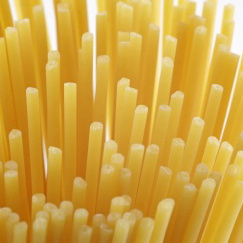
bucatini, l
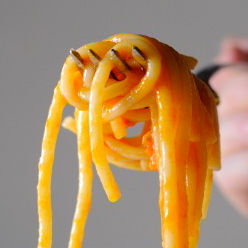
spaghetti, l
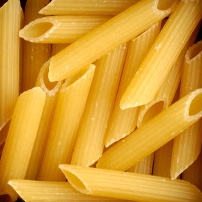
penne, l
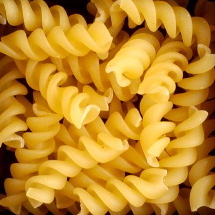
fusilli, l
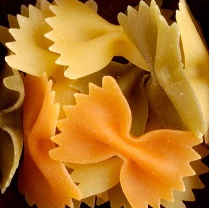
farfalle, l
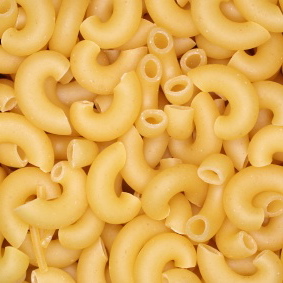
macaroni, l

tortellini, l
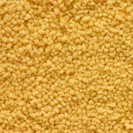
couscous, l